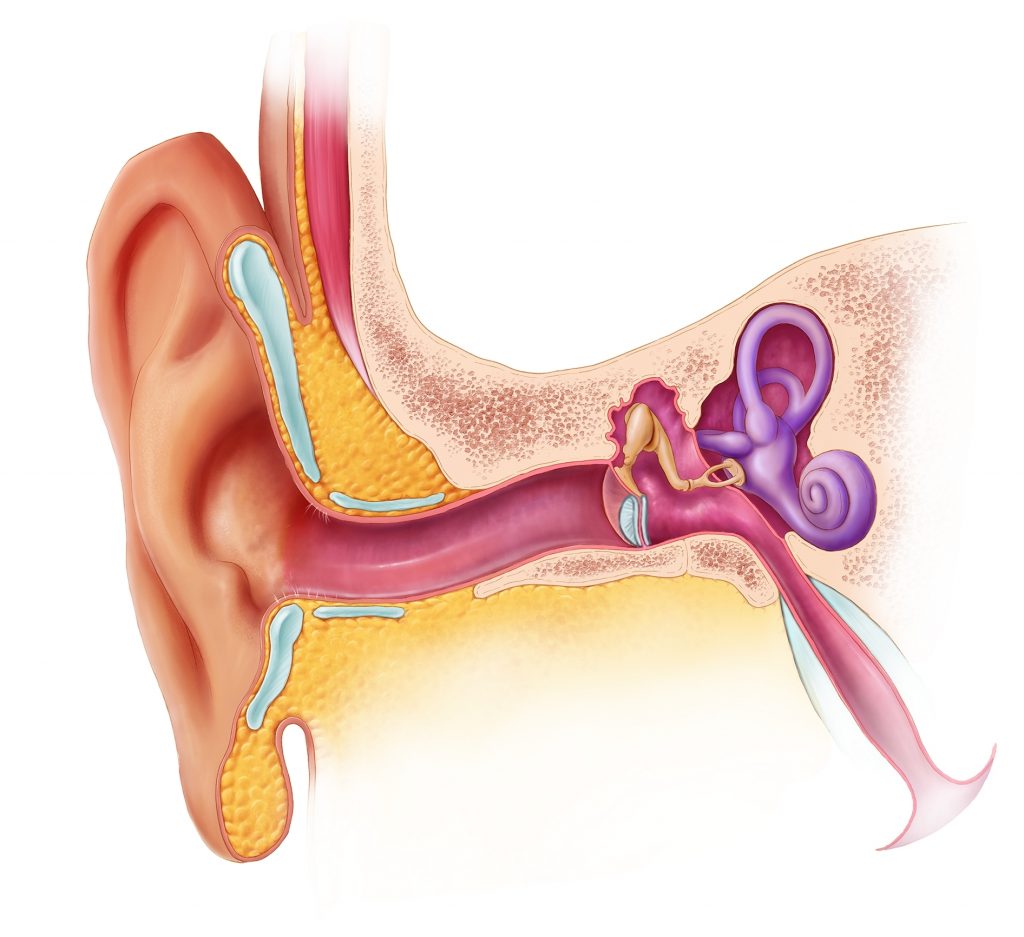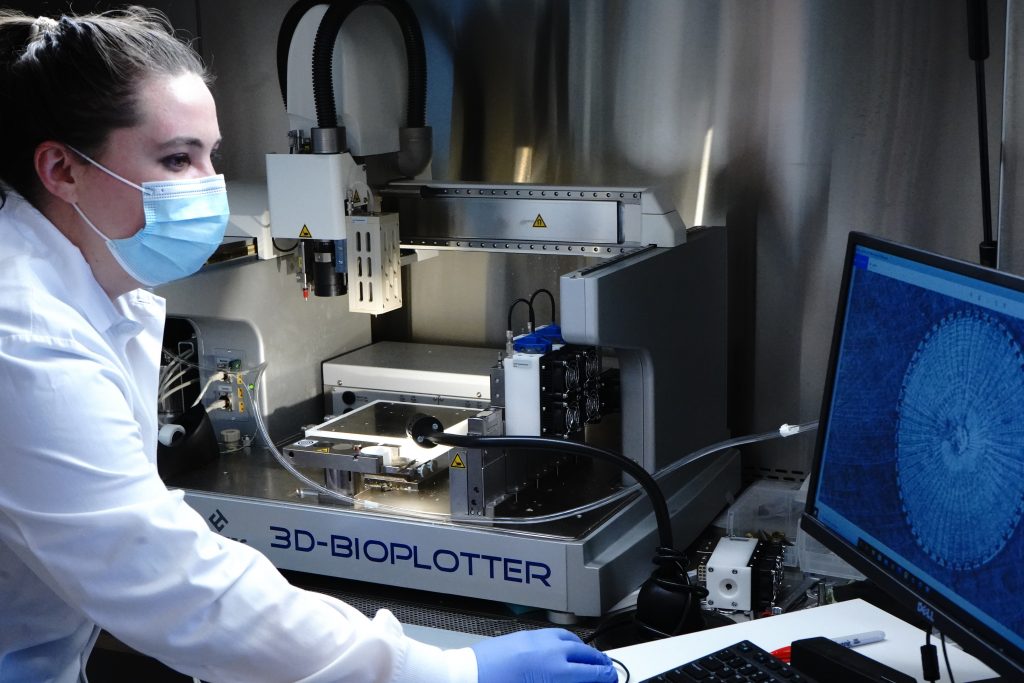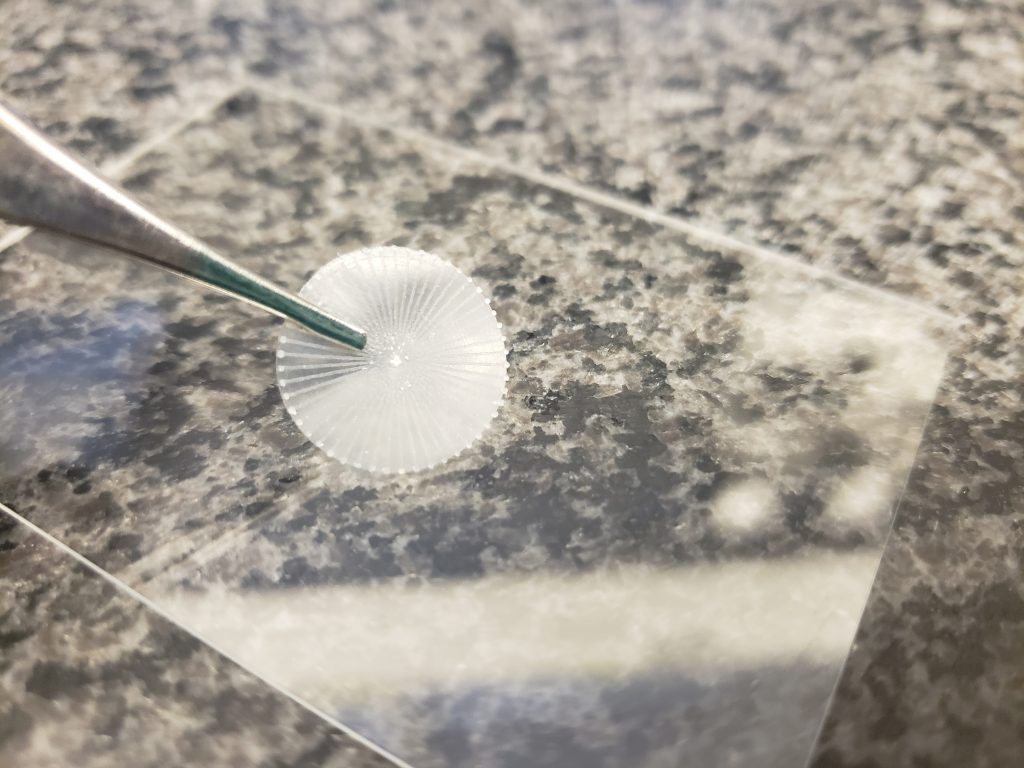Industrial 3D printer manufacturer Desktop Metal’s healthcare subsidiary Desktop Health has bought the rights to a 3D bioprinting technology that could be capable of regenerating the aural tissues of hearing loss patients.
Referred to as ‘PhonoGraft,’ the firm’s newly-acquired platform yields soft tissues that expedite the human body’s regeneration of the ‘tympanic membrane,’ also known as the eardrum. With further R&D, the technology may also prove useful within other regenerative applications, such as cardiovascular and neuronal grafts or even plastic surgery.
“We believe that this platform may one day offer a groundbreaking solution to the millions of patients impacted by tympanic membrane perforation (TMP),” said Michael Jafar, President and CEO of Desktop Health. “PhonoGraft material technology, coupled with our leading biofabrication capabilities, has tremendous potential across a wide range of healthcare applications in soft tissue.”
“Today’s announcement marks the beginning of our journey to advance personalized medicine.”

Desktop Health and biofabrication
Launched in March 2021, Desktop Health is Desktop Metal’s clinically-focused subsidiary that specializes in the development of 3D printed healthcare products. Headed by its experienced CEO Michael Jafar, the business is able to market a range of services that address the needs of dental and medical clients, thanks to the technologies of its parent firm, particularly those it has recently acquired.
Desktop Metal’s $300 million acquisition of EnvisionTEC, for instance, has provided it with a ready-made means of accessing the growing 3D printed dental, jewelry and bio-fabrication markets. Since buying EnvisionTEC, Desktop Health has sought to continue growing the applications of its portfolio, and last month gained FDA 510(k) clearance for 3D printing dental prosthetics with its Flexcera Base resin.
The acquisition has also seen Desktop Health inherit EnvisionTEC’s 3D Bioplotter platform, which is capable of producing medical implants, although it has largely found R&D and educational usage over clinical applications. Now, with its decision to buy exclusive rights to PhonoGraft, the business appears to be ramping up its activities in this area, with a view to bioprinting implantable aural tissues in future.

‘PhonoGraft’ 3D bioprinting
Developed in the aftermath of the Boston Marathon bombings, PhonoGraft was first designed to help treat those who had suffered injuries from the blast. Since then, Nicole Black, a then doctoral student at Harvard University and her research group, have worked with Aaron Remenschneider and Elliott Kozin at Mass Eye and Ear, to assess the technology’s potential as an alternative means of eardrum repair.
“One of the most prevalent injuries of the Boston Marathon bombing was perforated eardrums,” explains Dr. Remenschneider. “This is also common in military personnel after blast injury and in children and adults with ear infections. Surgical repair of the eardrum is unfortunately necessary for many patients to restore hearing and create a ‘safe’ ear.”
Following six years of R&D, as well as significant funding from the Wyss Institute, Black and her colleagues eventually managed to clinically de-risk their PhonoGraft material and platform in 2019. In effect, the now-approved devices consist of either circular or radial scaffold grafts made from a biodegradable elastomer, which are designed to be implanted and function like a native eardrum.

During preclinical animal studies, the PhonoGraft showed the ability to not only heal eardrums, but encourage the growth of native cells and blood vessels around it. The synthetic eardrum also allowed the transmission of both low- and high-frequency sound waves, and with further development, Black maintains that it’s capable of “intelligently supporting the regeneration” of other tissues as well.
In order to commercialize their technology, Black and her colleagues set up a start-up called Beacon Bio two years ago, and this has now been acquired by Desktop Health. The deal effectively sees the Desktop Health add the PhonoGraft platform to its medical portfolio, while providing the Beacon Bio team with the backing needed to conduct further preclinical studies and pursue FDA review.
“I’m delighted for the members of my lab at Harvard and our collaborators at Mass Eye and Ear,” said Jennifer Lewis, ScD, a Core Faculty member at the Wyss Institute and Jianming Yu, Professor of Arts and Sciences at Harvard SEAS. “In addition to TMP relief, this advanced graft technology could pave the way for a multitude of healthcare products in the fields of cardiac, vascular, and plastic surgery.”
The blooming bioprinting sector
Bioprinting’s advances in the lab are now drawing the attention of the 3D printing industry’s biggest firms, with the technology increasingly showing commercial potential. Earlier this year, 3D Systems purchased 3D bioprinter developer Allevi, in a move that has allowed it to expand on its clinical capabilities and address potential drug R&D applications.
Elsewhere, specialists like EPFL spin-out Readily3D have made significant progress with their technologies, and the company 3D bioprinted a human pancreas just last month. Made as part of the EU-funded Enlight project, the additive manufactured organ is designed to be used for testing diabetes medications.
Finnish start-up Brinter, meanwhile, has recently received €1.2 million towards the development of a modular new 3D bioprinter. The company’s backer Innovester believes that the technology could make scientific R&D up to ten times faster, and help finally usher in the age of 3D bioprinted heart/kidney transplants.
The nominations for the 2021 3D Printing Industry Awards are now open. Who do you think should make the shortlists for this year’s show? Have your say now.
To stay up to date with the latest 3D printing news, don’t forget to subscribe to the 3D Printing Industry newsletter or follow us on Twitter or liking our page on Facebook.
For a deeper-dive into additive manufacturing, you can now subscribe to our Youtube channel, featuring discussion, de-briefs and shots of 3D printing in-action.
Are you looking for a job in the additive manufacturing industry? Visit 3D Printing Jobs for a selection of roles in the industry.
Featured image shows a scientist using the Desktop Metal-acquired 3D Bioplotter platform. Photo via Business Wire.



